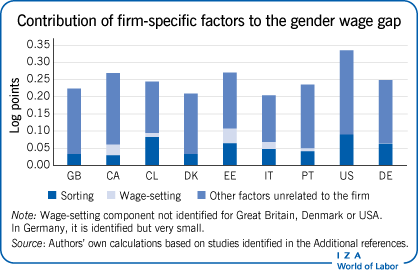Elevator pitch
In most developed countries, women have closed the gap in educational attainment and labor market experience, yet gender wage gaps persist. This has led to an increased focus on the role of employers and employment practices. In particular, research has focused on the types of workplace where men and women work, their promotion prospects and the extent to which they are rewarded differently for similar work. Understanding the relative importance of these features, and the mechanisms that generate them, is necessary to design effective policy responses.

Key findings
Pros
Analysis of Linked Employer-Employee Data (LEED) has shown that gendered sorting across firms, and the unequal distribution of rewards within them, can each account for substantive portions of the gender wage gap.
Some noticeable patterns with respect to the gender wage gap arise from gender differences in preferences for particular types of jobs or reward packages, but there is also evidence of bias in managerial decisions.
Increasing the degree of transparency and accountability within organizations is effective in reducing managerial bias in hiring, promotion decisions and pay setting.
Cons
Diversity training has a limited impact on managerial behavior, and should be accompanied by other organizational initiatives to create a level playing field.
The gender wage gap is particularly large for women with caring responsibilities, caused in part by a lack of flexibility in many jobs.
Generous family-friendly policies can be counter-productive in terms of the gender wage gap, unless accompanied by a redistribution of caring responsibilities from women to men.